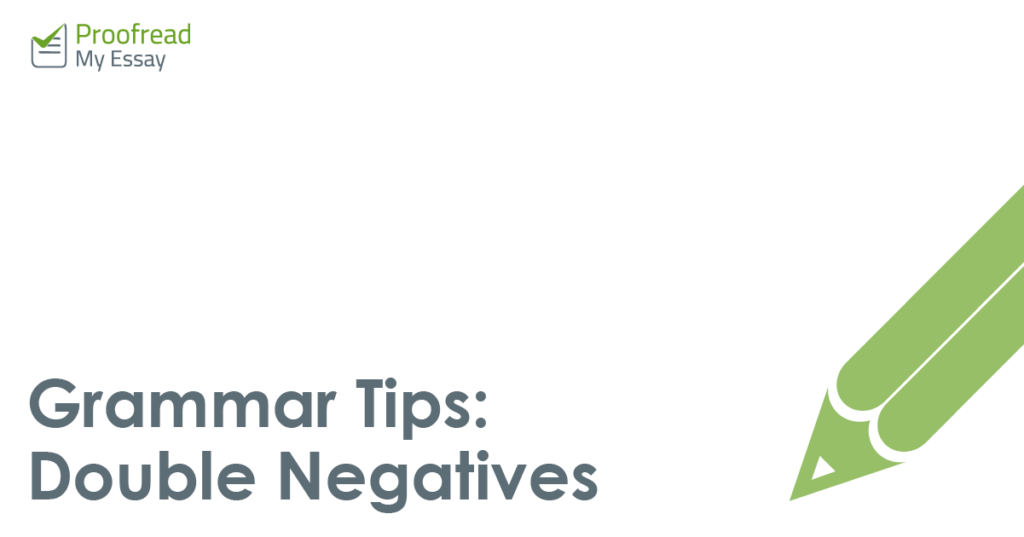We’re not saying that grammar isn’t easy, but it isn’t uncomplicated either. And if you struggled to follow that sentence, it’s because we packed it with double negatives. Generally, you should avoid these to ensure clarity. But not all double negatives are wrong, as we will explain in the rest of this post.
(Photo: Ashley Pomeroy/wikimedia)
Double Negatives (The Bad Kind)
We’re often told to avoid double negatives in English, since two negatives in a sentence cancel one another out. The classic example is a denial of responsibility:
I didn’t do nothing!
The problem is that ‘didn’t’ and ‘nothing’ are both negative and cancel one another out. As such, it suggests the speaker did do something. To correct this sentence, we would switch one negative term for a positive one:
I didn’t do anything.
OR
I did nothing.
Find this useful?
Subscribe to our newsletter and get writing tips from our editors straight to your inbox.
This ensures clarity. But while you should avoid double negatives like this in formal writing, they can create a particular tone of voice in literary writing.
Acceptable Negativity
Sometimes, using two negatives is fine, such as with phrases like ‘not bad’ or ‘not uncommon’, which express a positive using two negatives.
‘Not bad’, for example, usually means ‘quite good’. The double negative here is a form of ironic understatement, sometimes known as litotes. So when Tom Jones sings that ‘it’s not unusual to be loved by anyone’, what he means is ‘it’s normal to be loved by someone’. Which, we’ll admit, is less catchy.
(Photo: VMusic2016/wikimedia)
When Should I Use Double Negatives?
Double negatives like ‘not bad’ are common in everyday language, so they’re fine when writing to friends or family (or in other informal writing).
However, unless you’re sure about using them correctly, you should avoid them when clarity is important. And you should never use the ‘I didn’t do nothing’ kind of double negative in formal writing.
Ultimately, then, it’s a matter of context and making sure you’re understood. Of course, to make doubly sure you’re using double negatives correctly, you can always have your work checked by a professional!
